





| Variable Oystercatcher (Haematopus unicolor (Forster, 1844)) |






|
|
Scientific name: Haematopus unicolor (Forster, 1844) Common name: Variable Oystercatcher Other names: Maori name: Torea-pango. French name: Huîtrier variable Order: Charadriiformes Family: Haematopodidae Size: Body size: 42 to 53 cm; Weight: 450 to 900 g; Wingspan: 76 to 89 cm. Females are slightly larger than males and have a longer bill. Habitat: Marine coastline in sandy, muddy or rocky areas. Food: Worms, bivalve molluscs that it opens with its bill, gastropods and crabs on the seashore. Prey can be captured at depth thanks to the long bill or on the surface. Nesting: The nest is built on the ground, it is a simple depression lined with algae and shells. There is a clutch of around 3 eggs generally during the austral spring or summer. Migration: Sedentary. Geographic area: Endemic to New Zealand. |
The Variable Oystercatcher exists in three plumage forms, the proportion of which varies depending on the latitude. The southern Variable Oystercatchers of New Zealand tend to have an entirely black plumage. The Variable Oystercatchers of northern New Zealand tend to have a black and white plumage. The white extends from the lower chest, to the belly and under the tail. The shoulders remain black. There are intermediate forms which have black spotted or streaked underparts. All these forms can hybridize with each other. The long, straight bill is bright orange with a paler tip. The eyes are bright red. The legs are pink. Juveniles are more brownish. They have grey legs. The tip of the bill and the eyes are dark. There is a possible confusion of the black and white form with the South Island Oystercatcher (Haematopus finschi). This latter species has white shoulders and the limit between the black of the upper parts and the white of the lower parts is very clear, whereas this is not the case with the Variable Oystercatcher. The bill of the South Island Oystercatcher is also significantly thinner. |
| [To know more about the Variable Oystercatcher] [Next picture] [Top] |
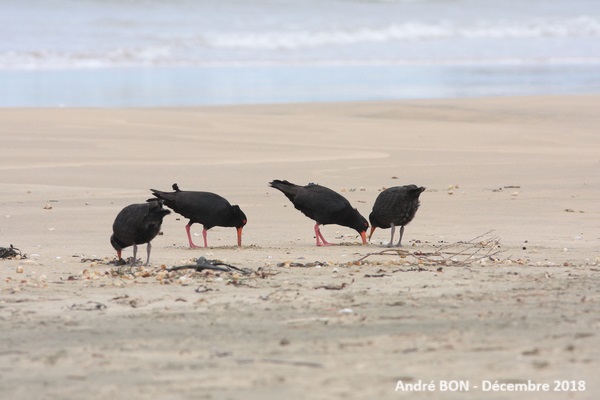
|
Variable Oystercatchers use their long, straight bills to search for food in the sand of Porpoise Bay. |
| [To know more about the Variable Oystercatcher] [Next picture] [Previous picture] [Top] |
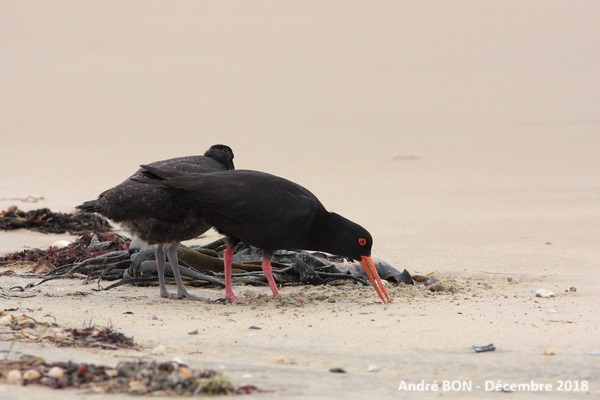
|
Here is an adult accompanied by a juvenile with grey legs. |
| [To know more about the Variable Oystercatcher] [Next picture] [Previous picture] [Top] |
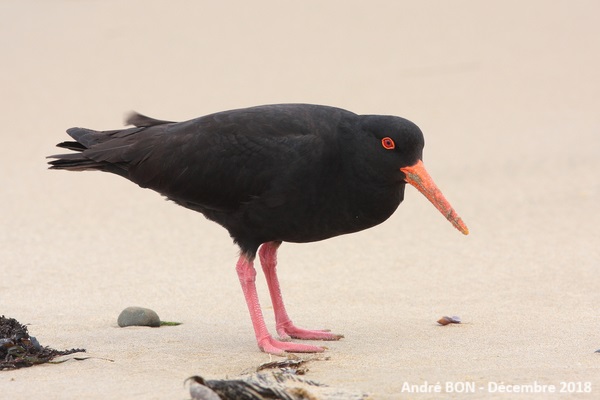
|
The Variable Oystercatcher is not a very shy bird and is easy to approach. |
| [To know more about the Variable Oystercatcher] [Next picture] [Previous picture] [Top] |

|
We are here in the south of the South Island, so it is normal to observe entirely black Variable Oystercatchers. |
| [To know more about the Variable Oystercatcher] [Next picture] [Previous picture] [Top] |
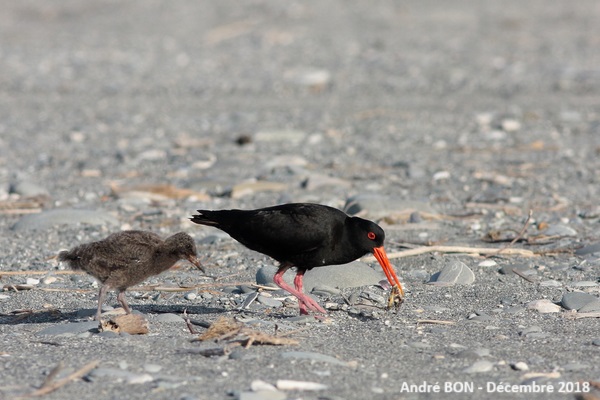
|
We came to Okarito for a night walk with a guide to see the Okarito Kiwi in its natural environment. I recommend this activity which will remain a very highlight of our trip to New Zealand. No photos but unforgettable memories. While waiting for nightfall we walked on the beach in the company of Variable Oystercatchers. |
| [To know more about the Variable Oystercatcher] [Previous picture] [Top] |
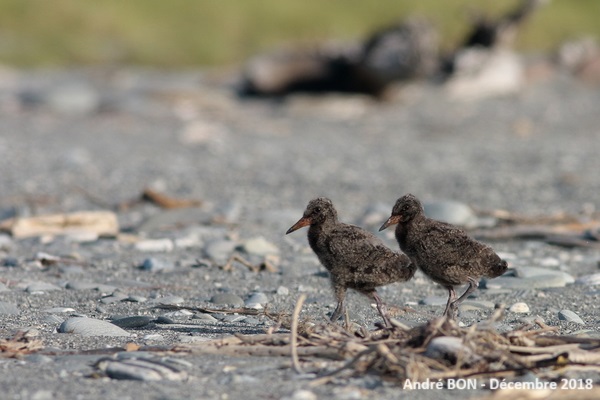
|
Juveniles. |